|
Wool Fabric – A Fiber of Contrasts and Contradictions
Wool fabric is created from the most versatile fiber known to man, and is a natural animal fiber, made of protein. Wool comes primarily from sheep, and wool fabric can be worn comfortably in more climates than any other fiber. Wool can keep you cool on a sweltering hot day and warm in subzero temperatures. Thus wool is a study in contradictions.
Wool as a natural animal fiber has a natural waviness called crimp and tiny overlapping scales cover the surface of the fiber. As a result wool is set apart from other fibers which have straight and smooth fibers. Different types of wool are based on the number of scales, with fine wools having more scales than scratchy or coarse wools. How is this possible? It is possible because there are many different breeds of sheep and thus many types of wool. The type of wool, whether fine or coarse also depends upon the arrangement of the scales.
Often people believe that they cannot wear wool fabric, because of the scratchy surface of some wools. However, wools are created in many different textures, so there are wools that just about anyone can wear, because of the softer surfaces. Therefore, it is not so much that people are allergic to wool fabric, but that they may be wearing wools that have a scratchy surface and other wool surfaces are soft and not scratchy and thus can be worn comfortably.
There is a wool fabric for just about everyone. Wool fabric comprises a huge family of fabrics. Some of the wool family’s members are: boiled wool, boucle, broadcloth, camel hair, cashmere, challis, crepe, flannel, fleece, gabardine, Harris tweeds, herringbone tweeds, houndstooth, Melton, mohair, wool jersey, wool velour, viyella, and voile and these are only a few members of the family there are 14 others which are not mentioned here. They run the gamut in textures from scratchy to as smooth as silk. 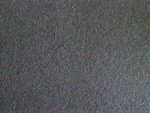
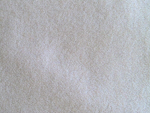
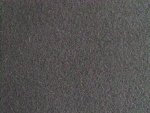
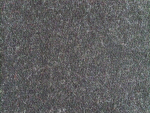
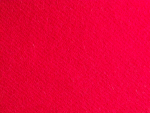
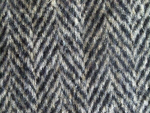
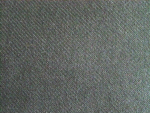
Fabric Characteristics (General Characteristics of Wool Fabric):
• Wool fabric is comfortable to wear, warm in winter and cool in summer because wool is porous allowing the skin to breathe • Absorbs moisture better than other natural fibers and is capable of holding 30% of its weight in moisture • Water-repellant, flame resistant, resilient and elastic • Resists wrinkling • Lightweight in relation to its bulk • Will hold a deep nap without matting • Wool fabric tailors well, easy to shape and crease • Resists static electricity • Sheds dirt, so garments are easy to keep clean • Can be hand laundered or dry-cleaned depending on the dyes, finishes, fabric structure, and garment design • Shrinkage can occur if laundered in a washing machine • Easily damaged with improper pressing • Damaged by moths, carpet beetles, chlorine bleach (can dissolve the fibers), and alkalis (harsh laundry detergents should be avoided) • Wool fabric is discolored by sunlight • Subject to pilling (small fuzz balls that form on the surface of the fabric)
Fabric Characteristics (Lightweight Wools):
• Many lightweight wools are firmly woven and easy to sew, but most will fray badly if over handled • Some are transparent and should be handled in keeping with transparent fabrics • Puckered seams and skipped stitches can sometimes be a problem • Easily marred by ripping • Easily marred by needles that are too large • Seam slippage can occur at stress points • Can be easily shaped by heat and moisture • Easily damaged by improper pressing Working With These Fabrics Requires:
• Sewing machine needles used should be 60/8 or 70/10 universals and sharps • Hand sewing needles sizes are 8-19 • Sewing machine settings should be a stitch length of 1.75-2mm • Sewing machine feet recommended are the wide straight-stitch, and zigzag foot • Thread should be all-purpose cotton, polyester and cotton/polyester blend, for basting cotton and silk, and for topstitching all-purpose cotton, polyester and silk • Layout should be double layer, right sides together • Marking tools can be all types except wax • Tools and equipment recommended are sharp scissors, sharp shears, rotary cutter and mat, pins, small safety pins to name a few • Seams recommended are plain, flat fell, lapped, French to name a few • Hems recommended are plain, hand blindstitch and hand catchstitch, machine blindstitch to name a few • Seam and hem finishes recommended are single or double-ply, pinked, pinked and stitched, zigzag, serged to name a few • Edge finishes recommended are self-fabric facings, bias facings, bindings and bands • Interfacings recommended are light weight interfacings • Linings and underlings are sometimes used for support • Closures recommended are light weight zippers, buttons, and snaps These Fabrics Are Suitable For:
Light weight wool fabric consists of challis, crepe and flannel. These wools are used for blouses and dresses and garments with gathers, un-pressed pleats, cowl necklines and garments with draped or soft folds.
Fabric Characteristics (Textured Woolens):
• Many are firmly woven and easy to sew • A few are loosely woven and difficult to handle • Many have a nap • Some are bulky • Are easy to shape with heat and moisture • Can be damaged with improper pressing • Some tend to pill Working With These Fabrics Requires:
• Sewing machine needles should be sizes 70/10-90/14 sharps or universals depending on fabric weight • Hand sewing needles should be sizes 5-7 • Sewing machine settings should be a stitch length of 2-3mm • Sewing machine feet used should be the wide straight stitch, zigzag, roller or walking foot • Thread should be all-purpose cotton, polyester, and cotton/polyester blend, for basting silk or soft cotton, for topstitching all-purpose topstitching thread or silk thread • Layout should be nap, double layer, right sides together • Marking tools can be all types, except temporary marking pens • Tools and equipment recommended are sharp scissors, sharp shears, rotary cutter and mat, pins, small safety pins, point turner, and stabilizers • Seams recommended are plain, welt, double-welt and topstitched • Hems recommended are plain, handblindstitch, handcatchstitch, machine blindstitch, machine double-stitch to name a few • Seam and hem finishes recommended are single-ply unfinished, pinked, pinked and stitched, serged, Hong Kong and bound to name a few • Edge finishes recommended are self-fabric facings, bias facings, bindings and bands • Interfacings when used are recommended to be fusible or sew-ins • Linings are generally used for outerwear • Closures recommended are all types • Pockets recommended are all types
These Wool Fabrics Are Suitable For:
Textured woolens are considered for example, Harris tweeds, and herringbone tweeds. Theses fabrics are good for men’s and women’s casual sportswear, coats, jackets and suits.
Fabric Characteristics (Worsted Suitings):
• Firmly woven with a smooth, hard surface • Most are medium weight, but some are light weight to heavy weight fabrics • They hold a crease and pleat well • Are frequently difficult to ease • Some fray badly • Many are difficult to press • Become shiny when pressed improperly • Most spot badly Working With These Fabrics Requires:
• Sewing machine needed should be sizes 70/10-80/12 sharps and universals • Hand sewing needles should be sizes 5-9 • Sewing machine settings should be a stitch length of 2-2.5mm • Thread should be all-purpose cotton, polyester and cotton/polyester blend, for basting soft cotton or silk thread, for topstitching all-purpose topstitching thread such as cotton, rayon or polyester, for serging wholly nylon • Layout should be in general a nap layout, double layer, right sides together • Marking tools used can be all types, except temporary marking pens • Tools and equipment recommended are sharp scissors, sharp shears, rotary cutter and mat, pins, small safety pins, point turner and fabric stabilizers • Seams recommended are plain, welt, double-welt, serged and topstitched • Hems recommended are handblindstitch, handcatchstitch, machine blindstitch, and plain for example • Seam and hem finishes recommended are double or single-ply, unfinished, pinked, pinked and stitched, serged, zigzag for example • Edge finishes recommended are self-fabric facings, bindings and bands • Interfacings used can be fused or sew-ins • Linings are generally used for outerwear • Closures can be all types • Pockets can be all types These Fabrics Are Suitable For:
Worsted suitings include such fabrics as gabardine, and can be used for tailored designs in coats, jackets, pleated skirts, trousers, tailored dresses and riding habits.
Fabric Characteristics (Wool Coatings):
• Most have a prominent nap • Are very bulky • Most fray very little • Are difficult to press well • Wear at the edges and some are subject to pilling Working With These Fabrics Requires:
• Sewing machine needles used are sizes 80/12-100/16 sharps and universals • Hand sewing needles are sizes 3-7 • Sewing machine settings should be a stitch length of 3mm • Sewing machine feet recommended are the zigzag and zipper foot • Thread should be all-purpose cotton, polyester, and cotton/polyester blend, for basting soft cotton and silk, for topstitching two strands all-purpose cotton or polyester thread, all-purpose top stitching thread in polyester, cotton/polyester blend, rayon or silk • Tools and equipment recommended are sharp scissors, sharp shears, rotary cutter and mat, fabric weights, pins for example • Layout should be nap, single layer, right side up • Marking tools recommended are clips, tailor’s tacks, chalk, wax for example • Seams recommended are plain, topstitched, welt for example • Hems recommended are plain, hand blindstitch, hand blind-catchstitch, catchstitch and double-stitch for example • Seam finishes recommended are plain, pinked, pinked and stitched, serged, zigzag, bound, Hong Kong and seam tape • Interfacings when used are recommend to be fusible or sew-ins • Linings can be used • Underlinings are rarely used • Closures used can be buttons and button holes, button loops, zippers and toggles • Pockets can be all types These Fabrics Are Suitable For:
Wool coating fabrics include Melton, camel’s hair, cashmere, heavy tweeds, and gabardine to name a few. They are used in loose fitting coats, jackets, capes, ponchos, and ruanas.
Fabric Characteristics (Washable Wools):
• Are relatively easy to sew • They look like pure wool fabrics, but behave like synthetics • Skipped stitches may be a problem • They do not ease or tailor well • Difficult to press into sharp pleats and creases Working With These Fabrics Requires:
• Sewing machine needles used are sizes 80/12 or 90/14 universals • Hand sewing needles are sizes 7-9 • Sewing machines settings should be a stitch length of 2-2.5mm • Thread should be all-purpose cotton, polyester, cotton/polyester blend, for topstitching thread should be all-purpose topstitching thread • Tools and equipment recommended should be sharp scissors, sharp shears, rotary cutter and mat, pins, small safety pins and stabilizers for example • Marking tools can be all types • Seams recommended are plain, welt, double-welt, topstitched for example • Hems recommended are plain, hand blindstitch, machine blind catchstitch for example • Seam and hem finishes recommended are single or double-ply, zigzag, multi-stitch zigzag and serged • Interfacings depend on garment type and design • Closures can be all types • Pockets can be all types
These Fabrics Are Suitable For:
Washable wool fabric has the appearance of traditional wools such as flannels, tweeds, twills, broadcloth, classic plaids to name a few. However, to render these wools washable, they have been chemically treated or their scales have been removed before spinning them into fibers. These fabrics are stronger, more durable and easier to maintain than traditional wools. They can be used in children’s clothing, men’s trousers, casual sportswear, and collarless coats.
For information about the notions, tools, and equipment required to complete a sewing project, click here to view the sewing notions home page For more information about this family of fabrics some great references are:
Claire Shaeffer’s Fabric Sewing Guide
More Fabric Savvy by Sandra Betzina
All About Wool – Julie Parker’s Fabric Reference Series
For more interesting information about wool fabric click here on Wikipedia.org
To continue exploring information about fabrics follow the links below. Acrylic Fabric
|




